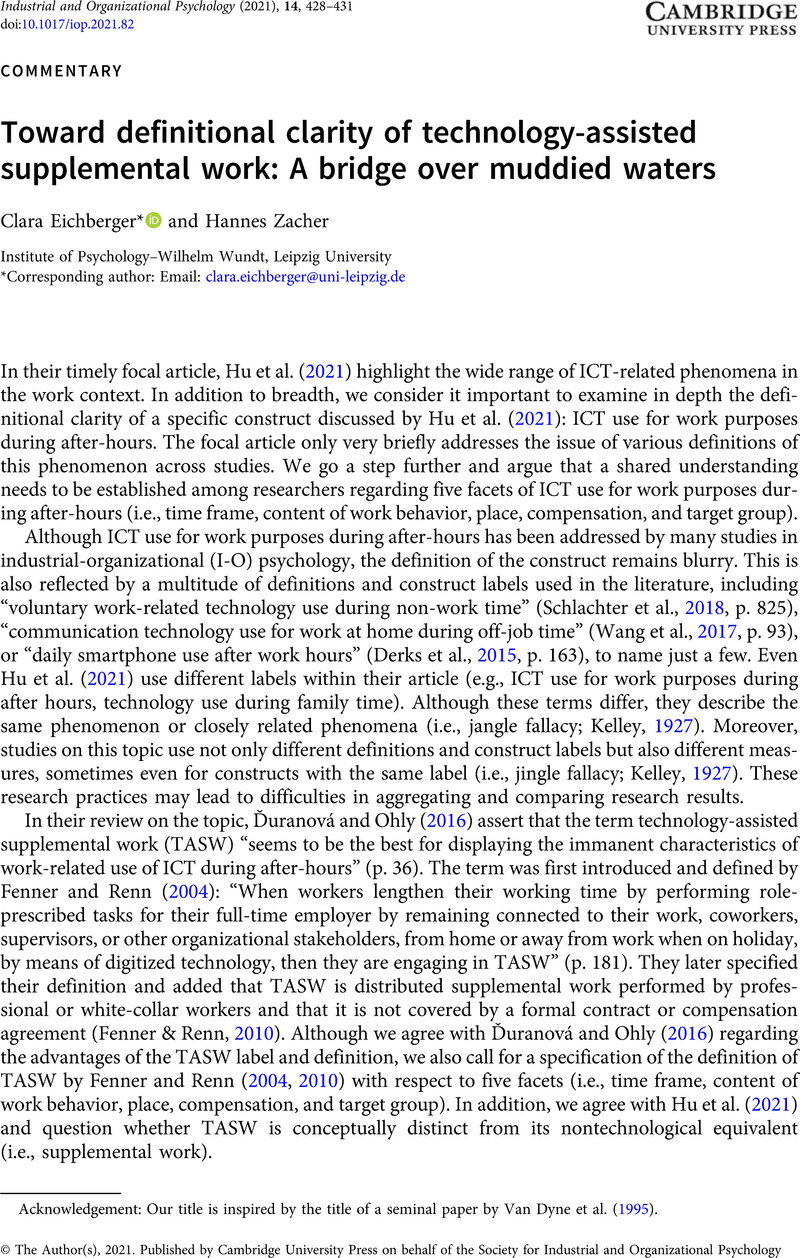Crossref Citations
This article has been cited by the following publications. This list is generated based on data provided by Crossref.
Bernhardt, Janine
and
Recksiedler, Claudia
2022.
Work-to-family conflict and parenting practices: Examining the role of working from home among lone and partnered working mothers.
Journal of Family Research,
Vol. 34,
Issue. 4,
p.
1072.
Bala Subramanian, R.
Srikanth, P. B.
and
Thakur, Munish
2022.
Influence of distributive justice on organizational citizenship behaviors: The mediating role of gratitude.
Frontiers in Psychology,
Vol. 13,
Issue. ,
Venz, Laura
Wöhrmann, Anne M
and
Chang, Daisy
2023.
Always on Call: Is There an Age Advantage in Dealing with Availability and Response Expectations?.
Work, Aging and Retirement,
Vol. 9,
Issue. 4,
p.
342.
Kühner, Clara
Rudolph, Cort W.
Derks, Daantje
Posch, Melina
and
Zacher, Hannes
2023.
Technology-assisted supplemental work: A meta-analysis.
Journal of Vocational Behavior,
Vol. 142,
Issue. ,
p.
103861.
Richard, Geneviève
2024.
Causes et conséquences de l’hyperconnectivité professionnelle : au-delà de la responsabilité individuelle des travailleurs et travailleuses.
Perspectives interdisciplinaires sur le travail et la santé,
Vol. 26-2,
Issue. ,
Kunz, Lea Katharina
Ducki, Antje
and
Hoppe, Annekatrin
2024.
What if I like it? Daily appraisal of technology-assisted supplemental work events and its effects on psychological detachment and work engagement.
Frontiers in Organizational Psychology,
Vol. 2,
Issue. ,



